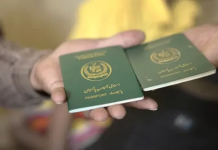
GREENORE: The small ferry moves gently across the calm waters of Carlingford Lough, connecting the picturesque hamlet of Greencastle in Northern Ireland with the village of Greenore, a mile and a half away in the Republic of Ireland.
It began sailing a little more than two years ago, saving farmers, commuters and tourists an hour-long drive inland to the nearest bridge.
The service is another sign that the border has all but vanished since the Good Friday Agreement was signed in 1998, ending decades of sectarian violence and creating a quiet sense of normality that older generations cherish and younger people may take for granted. But if the U.K. leaves the European Union on Oct. 31 without a Brexit divorce deal, this local boat could find itself plying an international border.
“We don’t know what to expect,” said Paul O’Sullivan, the ferry company’s managing director. “Brexit has resulted in chaos for our company.”
With both in the EU, the border barely resonates. As members, both the U.K. and Ireland have to abide by the rules of the club, the free movement of goods, services, capital and people.
In a no-deal Brexit, that all goes and the border — the only land border between the U.K. and the EU — will resonate once again.
Little wonder then that it’s been the most intractable issue in the Brexit negotiations over the past three or so years since the U.K. voted to leave the EU in June 2016.
With little more than three weeks to go before the scheduled Brexit date of Oct. 31, the two sides have failed to agree on a plan to ensure the border remains open, without the checkpoints that were magnets for violence during three decades of conflict. More than 3,500 people died during “The Troubles.”–Agencies



